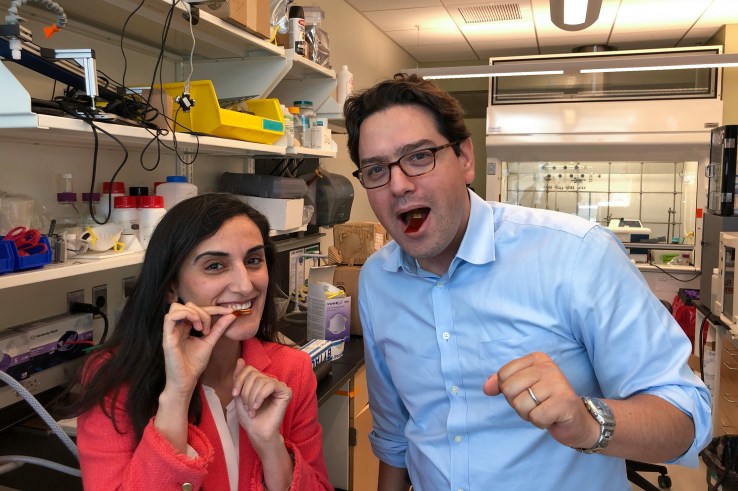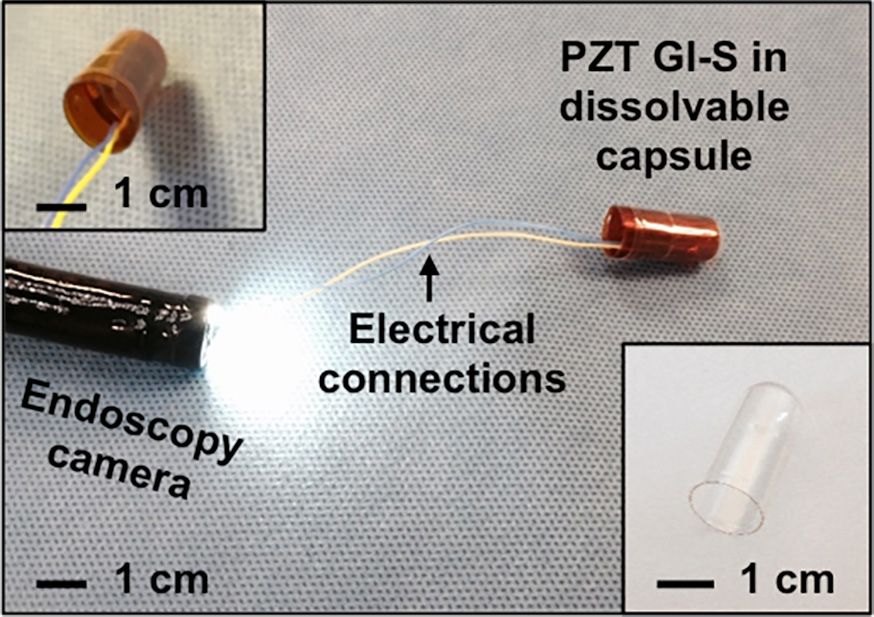Researchers develop digestible sensors for monitoring the gastrointestinal tract
![]()

MIT’s researchers spend a lot of time thinking about digestible technology. In the past couple of years, scientists at the school have developed all sorts of swallowable devices, including a robot fashioned from pig parts designed to remove batteries. The school’s Koch Institute in particular has focused on the space, looking at ways in which digestible sensors can be used to monitor things like drug intake.
Building on that research, a team at Koch is showing a new kind of sensor that can be rolled up into a pill and swallowed. Once the capsule dissolves, the sensor adheres to the stomach lining, monitoring movement that can be used to diagnose digestive disorders and keep track of food intake.

The system measures 2 by 2.5 centimeters when unfolded and uses polymers with flexibility similar to that of the human skin that stretch and move along with the gastrointestinal tract. The sensors are piezoelectric, meaning they generate voltage when manipulated. In the future, that property could be used to power further sensors without a need for an on-board battery, lowering the risk of this sort of system.
Testing the technology on pigs, the team found that the sensors were able to stay in the harsh environment of the tract up to two days without any issue.
“There are a lot materials that can reside in the GI tract without eliciting significant physiological response,” research affiliate Giovanni Traverso told TechCrunch in an interview today. “Whereas, if you were going to implant them, they would induce a massive inflammatory response. In this particular study, the electronics are flexible. We placed them in the stomach and had the device unravel and adhere to the stomach.”
Future versions could help doctors detect disorders and monitor food intake for patients. The research was conducted along with Boston’s Brigham and Women’s Hospital.